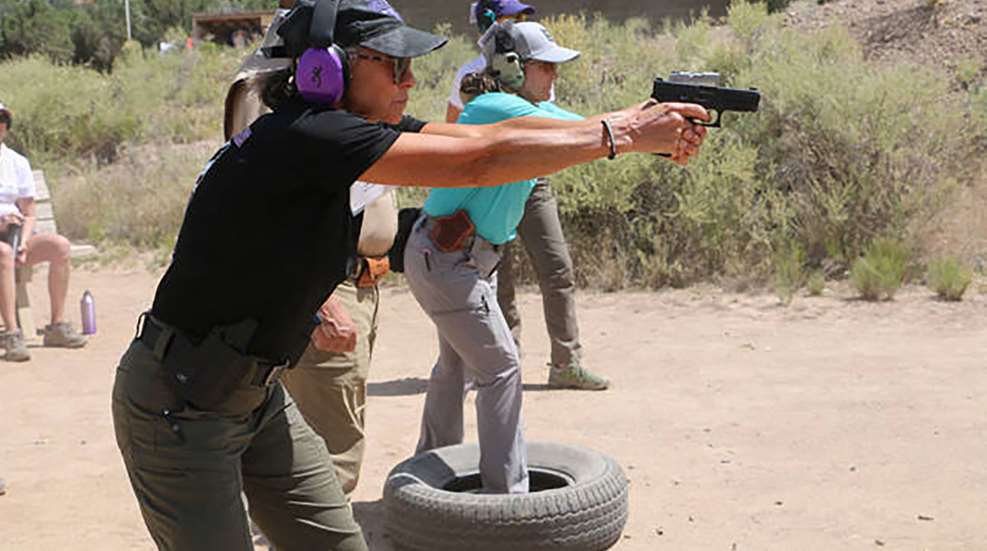
I first noticed her at the back of the group when the ladies walked down the trail. I was volunteering as handgun instructor at a local range’s Ladies’ Day shooting event. She was a gray-haired mature woman and stood in the back during my lecture. When it came time to shoot, she was one of the last to try.
After her granddaughter coaxed her up to the firing line, she cautiously picked up the handgun she had brought with her. A widow now living alone, her nephew bought her the pistol for protection. It was a full-size 9 mm, and when she brought up the gun, she leaned way back. I tried to adjust her stance, but while shooting, she leaned back again, arms ram-rod straight. She didn’t even hit paper. After more instruction on proper stance, she tried again, and shot much better. Everyone clapped! She turned to look at me, and a huge smile came across her face! I know I don’t get paid when I’m a volunteer instructor, but that smile was worth a million bucks.
The Isosceles Position
Although there are modifications to each, there are two main standing pistol shooting positions—Isosceles and Weaver. The Isosceles stance is so named because in this position, the extended arms, when viewed from above, look like an isosceles triangle. In this stance, your feet are placed at about shoulder-width apart, and your feet and shoulders are square with the target. Your knees should be slightly bent, and your weight is slightly forward, on the balls of the feet.

When you pick up your pistol, extend both your arms fully forward. Straighten out your elbows, but do not lock them. Your head should be erect, not hunched, and your shoulders are at their normal height, not raised. To aim, lift your pistol to eye level, and place your gun in the middle of your body.
What I like about the Isosceles stance is that it is natural and easy to assume, especially for beginner shooters. The downside, however, is that you are less stable if you are pushed forward or backward. In addition, in a defensive situation, you are exposing more surface area of your body to the bad guy.
The Weaver Position
The Weaver stance was developed by Los Angeles County Deputy Sheriff Jack Weaver in the 1950s. To assume the Weaver position, think like a boxer—your non-dominant foot is in front of the (firing-hand side) dominant foot. If you’re a right-handed shooter, your left front is in front of your right foot, achieving balance.
The elbow of your dominant arm is slightly bent, and your supporting arm’s elbow is bent downward. This should bring the pistol closer to your body than with the Isosceles position. Now comes the unique aspect of this position—the firing hand is pushed forward into the support hand, which simultaneously pulls rearward. This push-pull tension creates great stability and steadiness. The tension also helps control muzzle flip, allowing for faster follow-up shots.

The Weaver position is my stance of choice at the range. I feel I have better recoil management and much more stability when my feet are staggered. When I’m practicing with my everyday carry gun (EDC), and shooting at “bad guy” targets, I also like knowing that less of my body is exposed to the enemy.
The only complaints I’ve heard from my students who try to stand this way are from those who are cross-dominant shooters (for example, the ones that are right-hand dominant and are left-eye dominant) since the two are now no longer matched up. For those students, I tell them to stand whichever way is most comfortable for them, as long as they are shooting well.
About the Author: Maureen Sangiorgio is an NRA Certified Firearm Instructor/Range Safety Officer. She can be reached directly at maureenwriter.com.















































